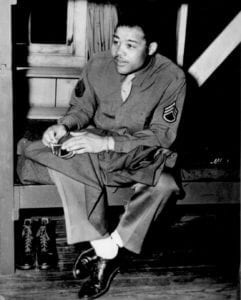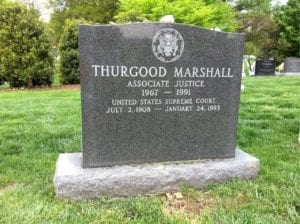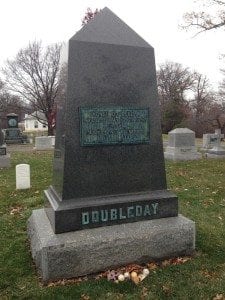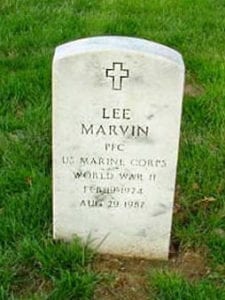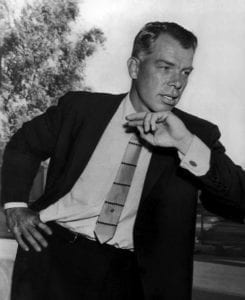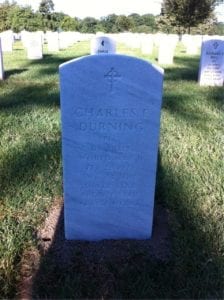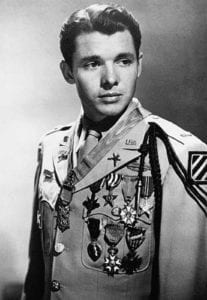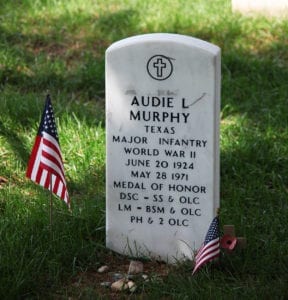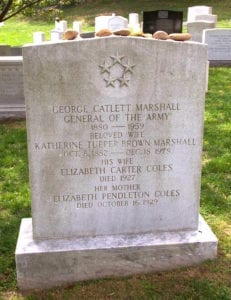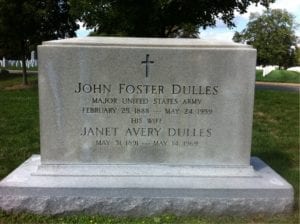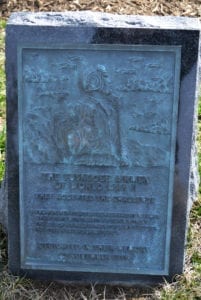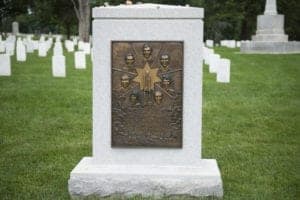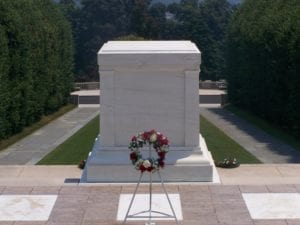Arlington National Cemetery is the final resting place of many American heroes and significant figures from throughout the history of the United States.
This list will compile a number of important burial sites you may want to visit while you’re at Arlington.
Many of the people listed here are included in our Arlington National Cemetery walking tour.
Overview
There are a lot of people buried at Arlington, and many of them are either well-known or famous in some way.
This post will list some of the most noteworthy gravesites you'll be able to find here, but you can find even more important burials on the following lists and self-guided tours:
- Black History of Arlington National Cemetery
- Notable Women Buried in Arlington National Cemetery
- Arlington Cemetery Self-Guided Tour
- Off the Beaten Track at Arlington
Here are a few of the most commonly asked questions from people visiting this historic site, but you can also check our Arlington Visitor's Guide for more details.
Which presidents are buried at Arlington?
There are only two presidents buried here: William Howard Taft and John F. Kennedy. They are among the most famous people in the cemetery.
Who was the first person to be buried at Arlington?
A soldier by the name of Private William Christman on May 13th, 1864.
How many people are buried at Arlington?
There are around 400,000 people currently buried at Arlington.
If you're interested in learning even more, make sure to read our Arlington FAQs and our Guide to Symbols and Emblems of Arlington Cemetery.
Joe Louis
From 1937-1949, Louis was the Heavyweight Champion of the World, which means he held the title longer than any other boxer in history.
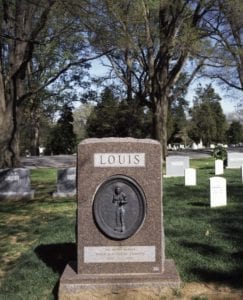
He also defended it more often than any other boxer, including in a match with Max Schmeling, who at the time was representative of Nazi Germany.
In front of 70,000 spectators at Yankee Stadium, Joe Louis defeated Schmeling in just a little over 2 minutes.
It should be no surprise he also enlisted in the Army and served during WWII.
Thurgood Marshall
Marshall was the first Black man to become a Supreme Court Justice, and he was appointed by President Lyndon B. Johnson in 1967.
Thurgood Marshall served this role for 24 years, and he was the only Black justice during that time.
Before becoming a Supreme Court justice, Marshall argued multiple cases before the Supreme Court including Brown v. Board of Education in 1954.
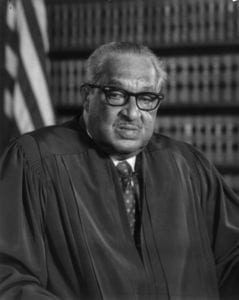
This landmark case would help to overturn legalized segregation in the United States, previously established during the Plessy v Ferguson case (1896) in which the Supreme Court found that black Americans were “separate but equal.”
Ruth Bader Ginsburg
Ruth Bader Ginsburg, often affectionately referred to as “RBG”, was an Associate Justice of the Supreme Court.
She was a trailblazer for women, both generally through her legal advocacy and specifically within the legal profession itself.
She attended Cornell University, where she met her husband Martin Ginsburg, whose status as an Army reservist called to active duty early in their marriage qualified him for burial at Arlington when he passed in 2010.
Early in her career, she faced constant gender discrimination, even to the point of being denied a Supreme Court clerkship for Associate Justice Frankfurter solely due to her gender.
All this despite graduating tied for first in her class from Columbia Law School.
In 1972, she co-founded the Women’s Rights Project at the ACLU, and from that position she argued hundreds and hundreds of gender-discrimination cases, including six before the Supreme Court, winning five.
Though seen as a centrist and moderate when she was on the DC court, after her elevation to the Supreme Court in 1993 she became known as the heart of the liberal wing of the court.
Despite this, one of her closest and dearest friends in life was her colleague, Justice Antonin Scalia, who was often seen as the heart of the court’s conservative wing.
The two bonded over many things, most especially their love of opera, and indeed, in 2015, an opera was composed about their friendship, simply called Scalia/Ginsburg.
Medgar Evers
Medgar Evers was an activist from Mississippi who was an important part of the early Civil Rights Movement of the 1950s and early 1960s before he was brutally assassinated by a white supremacist outside his own home in 1963.
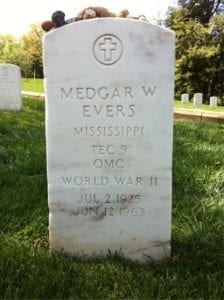
Evers served in the Army during World War II, between 1943 and 1945.
He served in the European theater and fought in the Battle of Normandy and was later honorably discharged after having achieved the rank of sergeant.
Like many Black veterans returning from fighting for liberty overseas, Evers was struck by the racist inequality and oppression of his home state and joined local Black citizens’ councils to protest the unfair treatment.
This led to his involvement with the NAACP which, after the 1954 Brown v. Board of Education case that eliminated segregation in schooling, used Evers as a test case when he applied for admission to the University of Mississippi Law School and was rejected on account of his race.
Though he never attended the school, his work was instrumental in its eventual desegregation in 1962.
His shocking assassination would become a crucial turning point in the Civil Rights Movement, causing President Kennedy to ask Congress for sweeping civil rights legislation.
More than 3000 people attended his funeral at Arlington.
John F. Kennedy & Jacqueline Kennedy
John F. Kennedy was one of the most popular presidents in the United States, and he served in the role from 1961 - 1963.
Kennedy accomplished many great things in his short time as president, but arguably his most important contribution was the expansion of the space program and the call for Americans to reach the moon “before this decade is out.”
Sure enough, Neil Armstrong would be the first human being to set foot on the moon on July 20th, 1969, before the end of the decade.
John F. Kennedy is one of only two presidents buried at Arlington National Cemetery.

Also known as Jackie, Jacqueline Kennedy was the First Lady and wife of John F. Kennedy. Despite her short time in the spotlight, she managed to become a cultural icon.
One of her most lasting contributions was a massive restoration of the White House, which at the time she had become First Lady, had been filled with pieces that had little or no historical significance.
After her restoration efforts, many historic pieces of furniture and other items were added to the White House, and it has since become quite popular to focus on historical significance when planning designs in this famous building.
Robert F. Kennedy
Robert was the younger brother of President John F. Kennedy, and he would also run for president in 1968.
Robert F. Kennedy served in the United States Navy in WWII, and he would later serve as the US Attorney General and a US senator from New York.
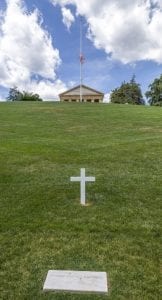
In addition to serving important roles in the military and in government, RFK, or Bobby as he was often called, was also an important figure in the Civil Rights movement, raising awareness about poverty in Black communities and working with Black leaders like Martin Luther King Jr.
Edward M. Kennedy
In addition to being the youngest sibling of John F. Kennedy, Ted Kennedy was probably best known for his service in the Senate, as he was the third longest-serving senator in United States history.
Having represented the state of Massachusetts for 43 years, Sen. Kennedy was a well-respected and beloved politician who managed to write more than 300 bills that would be enacted into law.
Ted Kennedy also served in the United States Army from 1951-1953, which made him eligible for burial in Arlington National Cemetery.
He is buried just 100 feet south of his brother Robert F. Kennedy.
William Howard Taft & Helen Herron Taft
Taft was the 27th president of the United States, and he was the first president ever to be buried at Arlington National Cemetery.
In addition to serving as president from 1909-1913, he was also the Chief Justice of the Supreme Court from 1921-1930.
His headstone was designed by sculptor James Earle Fraser, and it is designed to resemble classical Greek sculptures with some notable differences including the use of mahogany granite and gold leaf inscriptions.
Helen Taft was the First Lady and wife of William Howard Taft, president of the United States from 1909-1913. According to historical record, she was said to have had as much influence on the president as a cabinet member.
Thanks to her efforts, new safety and sanitary standards were set for federal workplaces. She also played a role in having the White House opened to more visitors.
Also known as Nellie, she planted the first saplings of what would become more than 3,000 Cherry Blossom trees along Washington DC’s Tidal Basin, which have become famous throughout the world and the center of the city’s annual Cherry Blossom Festival.
After her death in 1943, she was buried alongside her husband in.
Robert Todd Lincoln
Robert was the first son of Abraham Lincoln, and he was the only son of Lincoln to survive into adulthood.
He served General Ulysses S. Grant in the Civil War as an Army captain. After his role in the war, he became a successful lawyer in Chicago.
While he was never interested in becoming president like his father, Robert would accept an appointment as the Secretary of War from 1881 - 1885 and later as US Ambassador to the United Kingdom from 1889 - 1893.
Robert Todd Lincoln’s memorial was designed by James Earle Fraser, who also worked on the Taft headstone.
Abner Doubleday
Many may recognize the name Abner Doubleday as “the man who invented baseball” but historians have proven conclusively that this story was a complete fabrication pushed by a friend of his 15 years after his death.
Regardless, Doubleday was a distinguished military hero who is certainly worthy of celebration.
After graduating from West Point, he fought in the Mexican-American War, served as second-in-command at Fort Sumter where he fired the first cannon shot of the Civil War, and held the patent for the first cable car in San Francisco when he was stationed there after the war.
John Herschel Glenn Jr.
Also known simply as John Glenn, he was one of the seven original astronauts in NASA’s Project Mercury, and he was the first American to orbit the earth on February 10th, 1962.
Before these accomplishments, Glenn was an incredible fighter pilot with a long resume including 59 combat missions in WWII and 90 combat missions in Korea.
Following the Korean War, John Glenn became a test pilot, where he would become the first person to perform a transcontinental supersonic flight in 1957.
Glenn also served as a US senator from Ohio for four consecutive terms, and he was welcomed back to the space program in 1988 for the Space Shuttle Discovery mission, where he became the oldest person to go to space at the age of 77.
Lee Marvin
Although he’s probably best known as an American actor, Lee Marvin served as a scout sniper in WWII and was awarded the Purple Heart during his service for being shot in the spine during the Battle of Saipan.
He spent a year rehabilitating and would eventually make a full recovery and became a major star in Hollywood.
Lee starred in over 100 different films, including many notable westerns and action films such as The Man Who Shot Liberty Valance, The Dirty Dozen, The Killers, and Cat Baillou.
Lee Marvin won several awards during his time as an actor, including the Golden Globe, an Oscar, a BAFTA award and many others.
Maureen O’Hara
As an actress, many fans will be familiar with her roles in Miracle on 34th Street, The Parent Trap, McLintock, Rio Grande, How Green Was My Valley and many other popular movies.
While most film buffs know her from her many important roles, you might not know that she was buried at Arlington with her third husband, Brigadier General Charles F. Blair Jr.
Blair Jr. initially served in the US Air Force, and after his service he would eventually become the chief pilot of Pan Am.
Blair Jr. started his own airline, Antilles Air Boats in the US Virgin Islands. He wanted O’Hara to quit acting and help him run the business.
In 1978, he died while piloting one of his planes. After he passed away, O’Hara took over the business and became the first woman president of a United States airline.
Charles Durning
Durning was yet another actor who initially served as a soldier in WWII, and he was actually part of the first wave of troops to land at Omaha Beach on D-Day.
He was the sole survivor of his original unit, but he would go on to fight in the Battle of the Bulge.
After being captured by Germans, he was one of the only American soldiers to escape the “Malmedy Massacre” during which German troops opened fire on their prisoners.
Durning was awarded 3 Purple Hearts, the Silver Star, the Bronze Star, and the French Legion of Honor.
After returning home, Charles became an actor, and he said that it helped him to process psychological trauma from his experiences in the war.
Charles Durning starred in several notable films including The Muppet Movie, Oh Brother, Where Art Thou?, Dog Day Afternoon, Tootsie and The Sting.
Glenn Miller
Known as one of the most popular big-band and swing performers of his time, Glenn Miller recorded several notable songs as a civilian including Pennsylvania 6-5000, Moonlight Serenade, Chattanooga Choo Choo and more.
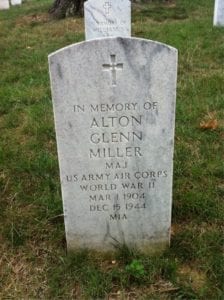
After making an impression in the musical world as a best-selling artist from 1939-1942, he decided to join the war effort and persuaded the Army to accept him so he could modernize the Army band.
Miller was somewhat successful in changing the way that Army bands played music, but he was probably most successful in boosting morale during WWII.
Sadly, Glenn Miller would go missing in December of 1944 when his plane did not arrive in Paris and disappeared somewhere over the English Channel. Miller was posthumously awarded the Bronze Star.
Audie Murphy
Audie Murphy was an American soldier during World War II, and later became an actor, songwriter, and rancher.
As anyone from Texas, his home state, should know, he is one of the most decorated soldiers in our nation’s history, and indeed earned every combat award for valor that the Army had, as well as additional decorations from the grateful nations of France and Belgium.
This is even more impressive when you learn that his sister had to falsify his birth certificate so he could enlist after the attack on Pearl Harbor, because he was otherwise too young to serve.
Murphy wrote his memoirs of his incredible deeds in WWII in 1949, and in 1955 those memoirs were turned into a movie, To Hell and Back, in which he also starred as himself.
He went on to act in several other rolls, mostly Westerns.
His life was cut tragically short and he died in a plane accident in 1971 at the age of 46.
George C. Marshall
While some of the other people on this list might be more recognizable, George C. Marshall is arguably one of the most important men buried at Arlington National Cemetery.
Marshall was the Chief of Staff of the US Army during WWII, directing the largest expansion of Army forces in the history of the United States from less than 200,000 to more than 8 million soldiers.
In 1944, Marshall was made a 5-Star General of the Army, the highest possible rank in the United States.
After the war, he would be appointed Secretary of State (1947-1949) and Secretary of Defense (1950-1951).
In addition to his military role, he also conceived the economic recovery plan for postwar in Western Europe, often called “The Marshall Plan”, and for this he received the Nobel Peace Prize in 1953.
John Foster Dulles
Dulles was a fairly important figure in American history, serving in many different roles throughout his life.
After graduating from Princeton and the George Washington University Law School, he received an Army commission during WWI and became a major on the War Industries Board.
In 1919, President Woodrow Wilson appointed Dulles as legal counsel to the United States Delegation attending the Paris Peace Conference.
From 1953-1959, Dulles served as Dwight Eisenhower’s Secretary of State. In that capacity, he helped craft the United States’ response to communism and the Cold War by focusing on alliances like NATO to contain what he saw as Soviet aggression.
He also notably helped to instigate the 1953 Iranian coup and began America’s involvement in South Vietnam.
The main international airport for the Washington DC area is named for him.
Tuskegee Airmen
After decades of a discriminatory practice keeping black soldiers out of aviation programs, the United States Army Air Corps would finally launch a training program for African Americans in 1941.
This program was located at the Tuskegee Army Airfield in Alabama, near a HBC (Historic Black College) called the Tuskegee Institute.
The 966 fighter pilots that would be trained here came to be known as the Tuskegee Airmen, and they fought in more than 1,800 missions during WWII.
In honor of their contribution to the Army, the entire group have been honored with this plaque and a memorial tree in Arlington National Cemetery.
Space Shuttle Challenger
Although the NASA space program has seen some of the most significant and important success in the history of our species’ experience in space, not every mission was successful.
In 1986, the Space Shuttle Challenger took off for space, but only 78 seconds after takeoff, the shuttle exploded. Everyone on board was killed in the explosion.
This was a particular tragedy for the nation’s school children, as one of the astronauts, Christa McAuliffe, was to be the first civilian in space.
She was chosen from over 11,000 applicants to NASA’s “Teacher in Space” program, and due to this many classrooms across the country were watching live as the tragedy unfolded.
In honor of the crew’s sacrifice for the advancement of science, the cremated remains of each astronaut have been buried at the Challenger Memorial here.
Tomb of the Unknown Soldier
This may be the most well known memorial in all of Arlington National Cemetery, and that is because it honors not just a person, but an idea.
Initially built as the final resting place for an unidentified soldier during WWI, the tomb has since been expanded to honor unidentified soldiers who died in later wars: WWII, Korea, and Vietnam.
The unknown soldier from the Vietnam War has been identified as Michael Joseph Blassie, Jr.
The Tomb of the Unknown Soldier has been a place where presidents, politicians, public figures, and service members have come to honor the veterans of the United States of America.
Today, the memorial continues to serve as a symbol of the sacrifice given by members of the military and the idea that no soldier who fights for their country should be forgotten.
You can read more about the Tomb of the Unknown Soldier in detail on our post.
Related Posts:






